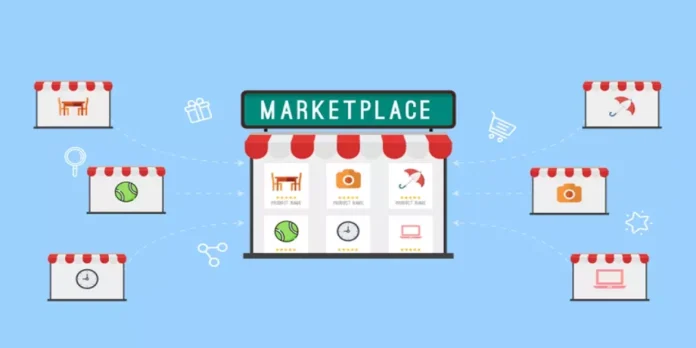Customers are increasingly demanding a fast-paced shopping experience, owing to the tremendous growth of e-commerce over the last few decades. Buyers no longer want to waste time looking through several different websites in order to find a single item.
They want a single source of data that will allow them to make faster decisions and save time and effort. The answer to this changing reality is a multi-vendor e-commerce marketplace. They are the answer for e-commerce marketers looking to grow their business and take it to the next level.
What is a multivendor marketplace?
A multi-vendor marketplace is a website that accommodates multiple vendors and allows them to sell online on the same platform. The owner of the website is simply responsible for operating it; third-party sellers are permitted to advertise their services online. Amazon, eBay, Flipkart, and other famous multi-vendor marketplaces are supporting a significant number of small and large vendors in selling across many locations.
A multi-vendor marketplace benefits both the provider and the marketplace owner. Every sale earns the owner a commission as well as profit for the seller. The seller is not responsible for website maintenance, and the owner is not responsible for product delivery.
How it work?
The types of products offered are the key to interpreting online multi-vendor marketplaces. They describe how a user will see your marketplace, what it will provide customers, and how you will profit from everything that happens on it. If you wish to be a niche marketplace that concentrates on a single product category, you’ll manage one sort of vendor, create one style of product list design, and focus your marketing efforts on a single consumer segment.
When it comes to multi-vendor marketplaces such as Amazon, eBay, and Alibaba, however, the game changes quickly. It’s all about managing a sea of vendors offering all types of products, cataloging and classifying things by variant type, designing various forms of product listing designs, and targeting all client categories for such marketplaces.
Components of multivendor marketplace
In order to handle customers and even sellers in a multi-vendor market, excellent management is required. Even if ordering and receiving orders may not be difficult for a customer. When developing a multi-vendor marketplace, there are various factors to consider.
Inventory management
When your vendors come from different areas and provide a variety of products, it’s critical to keep track of inventories and ensure excellent service. Inventory management may not always be important for the store manager. But vendor coordination is very crucial. You can keep an eye to ensure that your vendors are always loaded with supplies, ensuring that orders are fulfilled on time.
Management of order
Managing a single order and then verifying the order’s side process is a tricky task. When dealing with numerous vendors, it is critical to manage orders with care to ensure that service excellence does not decrease. When it comes to handling vendors and orders, it’s critical to give vendors accessibility to the store dashboard.
Shipping management
Shipping is, without a question, the most important aspect of your order fulfillment procedure. It establishes a connection between your store and your customers. As a result, accept responsibility for shipping rather than relying on vendors to do so.
An e-commerce platform is incomplete without shipping. Managing shipping in a multi-vendor environment must be done efficiently for sellers to deliver on time. Because you do not own any inventory as a business owner, it is critical to monitor how things are supplied to customers. One strategy to manage shipments more efficiently is to develop a standard delivery mechanism that all vendors can use. You can utilize well-known shipping plugins that are simple to integrate with your store and then set up rules to follow.
Analytics
Giving vendors a full report on their sales encourages them to make educated decisions, plan ahead for purchases, and generate inventory accordingly. If your sellers are on top of their game, your multi-vendor website will prosper.
A final word
Multi-vendor marketplaces, such as X-Cart are a wonderful area to start your large-scale business in today’s world. If you don’t need to sell something specific, you should consider this option. Contact organizations that provide multi-vendor website solutions and start building your store now.


















